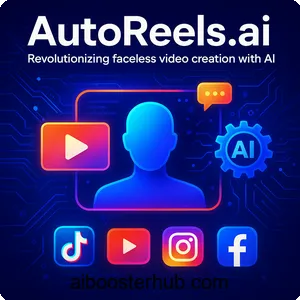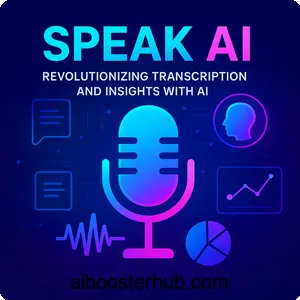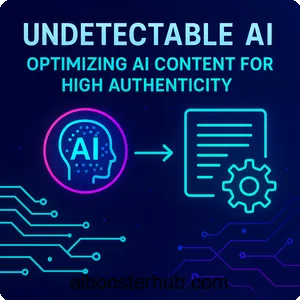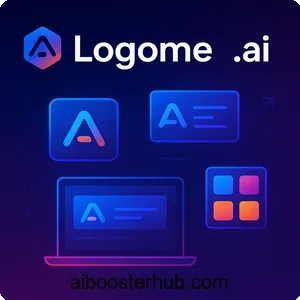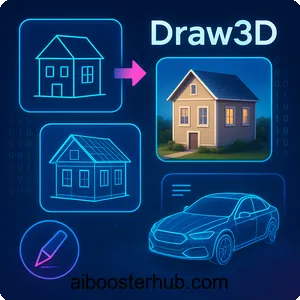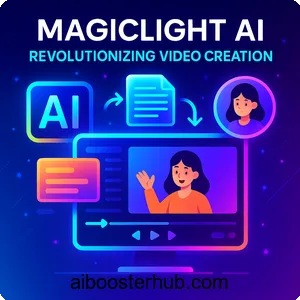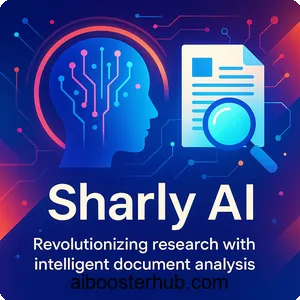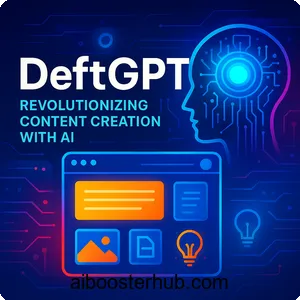AI in Education – Learning & Teaching Revolution
Artificial Intelligence (AI) is reshaping the landscape of education, offering innovative solutions that enhance both learning and teaching experiences. From personalized learning paths to streamlined administrative tasks, AI tools in education are transforming how students acquire knowledge and how educators deliver it. This article explores the revolutionary impact of AI education apps and AI tools for learning, delving into their applications, benefits, and future potential in the education sector.
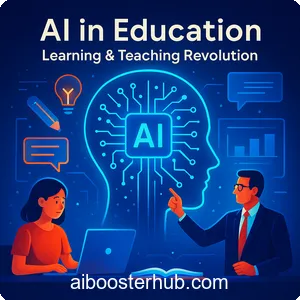
Content
Toggle1. The rise of AI in education
The integration of AI into education marks a significant shift in how knowledge is imparted and absorbed. AI tools for education leverage advanced algorithms, machine learning, and natural language processing to create dynamic, interactive, and personalized learning environments. These tools are designed to cater to diverse learning needs, making education more accessible, engaging, and efficient.
AI is not just a buzzword; it’s a catalyst for change. Schools, universities, and online learning platforms are adopting AI teaching tools to enhance curriculum delivery, assess student performance, and provide real-time feedback. Whether it’s an AI-powered tutor assisting a student with math or an app generating customized lesson plans for teachers, the possibilities are vast. This revolution is driven by the need to adapt to modern learners who demand flexibility, interactivity, and relevance in their education.
Why AI matters in education
AI’s ability to analyze vast amounts of data and adapt to individual needs makes it a game-changer. Traditional education systems often follow a one-size-fits-all approach, which can leave some students behind. AI tools for learning address this by tailoring content to each student’s pace, learning style, and knowledge gaps. For teachers, AI reduces repetitive tasks, allowing them to focus on fostering creativity and critical thinking in the classroom.
Moreover, AI education apps bridge geographical and economic barriers, enabling students in remote areas or underserved communities to access high-quality education. From language learning apps to virtual classrooms, AI is democratizing education like never before.
Key benefits of AI in education
- Personalization: AI adapts content to suit individual learning styles and paces.
- Accessibility: Students worldwide can access quality education through affordable or free apps.
- Efficiency: Teachers save time on grading and planning, focusing on student engagement.
- Engagement: Interactive tools like gamified apps make learning fun and immersive.
2. AI tools for personalized learning

One of the most significant advantages of AI tools in education is their ability to deliver personalized learning experiences. Unlike traditional classrooms, where teachers may struggle to address the needs of every student, AI can analyze a learner’s strengths, weaknesses, and preferences to create tailored educational journeys.
Adaptive learning platforms
Adaptive learning platforms use AI to assess a student’s current knowledge level and adjust the curriculum accordingly. These platforms track progress in real-time, identifying areas where a student excels or struggles. For example, if a student finds algebra challenging, the platform might provide additional practice problems or break down complex concepts into simpler steps. Popular platforms leverage algorithms to ensure that each learner receives content that matches their unique needs, making education more effective.
AI-powered tutoring systems
AI tools for learning include intelligent tutoring systems that act as virtual mentors. These systems use natural language processing to interact with students, answer questions, and provide explanations. For instance, an AI tutor might guide a student through a science concept, offering hints and feedback as they solve problems. Such tools are available 24/7, ensuring students can learn at their convenience, whether at home or on the go.
Language learning apps
Language acquisition is another area where AI education apps shine. Apps that use AI analyze a learner’s pronunciation, vocabulary, and grammar skills to offer targeted exercises. They can simulate real-life conversations, helping students practice speaking and listening in a safe, judgment-free environment. These apps often incorporate gamification, making language learning engaging and motivating.
3. Enhancing teaching with AI
While much focus is placed on students, AI teaching tools are equally transformative for educators. These tools streamline administrative tasks, enhance lesson planning, and provide insights into student performance, allowing teachers to focus on what they do best: inspiring and educating.
Automated grading and feedback
Grading assignments and providing feedback can be time-consuming. AI tools for education automate these tasks, enabling teachers to assess quizzes, essays, and even open-ended responses efficiently. AI-powered grading systems use natural language processing to evaluate written answers, ensuring consistency and fairness. This saves teachers hours of manual work, giving them more time to engage with students.
Lesson planning and content creation
Creating engaging lesson plans is a core part of teaching, but it can be resource-intensive. AI tools assist by generating lesson ideas, suggesting activities, and curating relevant resources based on curriculum standards. For example, an AI platform might recommend videos, articles, or interactive simulations to teach a history topic, saving teachers time while ensuring high-quality content.
Classroom management
AI also supports classroom management by analyzing student behavior and engagement. Tools that track attendance, participation, and even emotional cues (through facial recognition or sentiment analysis) help teachers create inclusive and productive learning environments. These insights allow educators to address issues like disengagement or bullying proactively.
4. AI education apps for accessibility

Education should be accessible to all, and AI education apps are making this a reality. By leveraging technology, these apps remove barriers related to location, disability, or socioeconomic status, ensuring that every learner has an opportunity to succeed.
Support for students with disabilities
AI tools are designed to cater to diverse needs, including those of students with disabilities. For example, text-to-speech and speech-to-text features assist students with visual or auditory impairments. AI-driven apps can also provide real-time captions for lectures or translate content into sign language, making education inclusive.
Bridging geographical gaps
In regions where access to quality education is limited, AI tools for learning offer a lifeline. Mobile apps and online platforms deliver courses, tutorials, and resources to students in remote or underserved areas. These tools often work offline or on low-bandwidth connections, ensuring accessibility even in challenging environments.
Multilingual education
AI-powered apps support multilingual education by offering content in various languages and dialects. This is particularly valuable for non-native speakers or students learning in a second language. AI can translate materials, provide real-time language support, and even adapt content to cultural contexts, making learning more relatable.
5. The role of AI in skill development
Beyond traditional academics, AI tools in education are helping students develop skills essential for the modern workforce. From critical thinking to digital literacy, AI is preparing learners for a rapidly evolving world.
Coding and STEM education
AI-driven platforms teach coding, robotics, and other STEM subjects through interactive tutorials and projects. These tools make complex topics accessible by breaking them down into manageable lessons. For example, students can learn to code by creating games or animations, guided by AI that provides real-time feedback and suggestions.
Soft skills and critical thinking
AI also fosters soft skills like problem-solving and collaboration. Interactive simulations and virtual scenarios allow students to practice decision-making in real-world contexts, such as managing a virtual business or solving environmental challenges. These experiences build critical thinking and adaptability, skills highly valued in today’s job market.
Lifelong learning
Education doesn’t end in the classroom. AI education apps support lifelong learning by offering courses for professionals and hobbyists alike. Whether it’s learning a new language, mastering data analysis, or exploring creative writing, AI tools provide flexible, self-paced learning options for all ages.
6. Challenges and considerations

While AI tools for education offer immense potential, they also come with challenges that educators and institutions must address to ensure ethical and effective use.
Data privacy and security
AI relies on data to function, raising concerns about student privacy. Schools and platforms must ensure that sensitive information, such as academic records or behavioral data, is protected. Transparent policies and robust encryption are essential to maintain trust.
Equity and access
While AI can bridge gaps, it can also exacerbate inequalities if not implemented thoughtfully. Not all students have access to devices or reliable internet, which can limit the benefits of AI education apps. Institutions must prioritize equitable access to ensure no one is left behind.
Balancing human and AI interaction
AI should complement, not replace, human teachers. Over-reliance on technology risks reducing the human connection that is vital to education. Educators must strike a balance, using AI to enhance teaching while fostering meaningful interactions with students.
7. The future of AI in education
The potential of AI tools in education is only beginning to unfold. As technology advances, we can expect even more innovative applications that will further revolutionize learning and teaching.
Virtual and augmented reality
AI combined with virtual reality (VR) and augmented reality (AR) will create immersive learning experiences. Imagine students exploring ancient civilizations in a virtual world or conducting virtual science experiments. These tools will make abstract concepts tangible and engaging.
AI-driven analytics for institutions
Educational institutions will increasingly use AI to analyze trends, predict student outcomes, and optimize resources. For example, AI can identify at-risk students early, allowing schools to provide targeted support and improve retention rates.
Global collaboration
AI tools will facilitate global collaboration, connecting students and educators across borders. Virtual classrooms powered by AI will enable real-time translation and cultural exchange, fostering a global learning community.
8. Conclusion
The integration of AI tools in education is ushering in a new era of learning and teaching. From personalized learning paths to streamlined teaching processes, AI education apps and AI tools for learning are making education more accessible, engaging, and effective. While challenges like privacy and equity must be addressed, the benefits of AI in education are undeniable. As technology continues to evolve, AI teaching tools will play a pivotal role in shaping the future of education, empowering learners and educators alike to thrive in a dynamic world.
By embracing these tools, we can unlock the full potential of education, ensuring that every student, regardless of their background, has the opportunity to learn, grow, and succeed.

